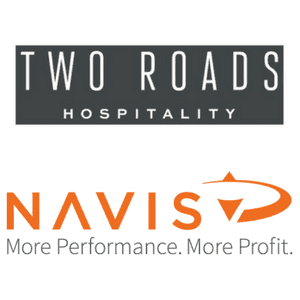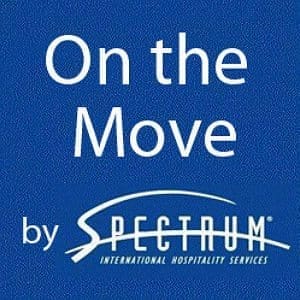The massive distraction of a noisy and disruptive business world poses a serious challenge to every small-business owner and entrepreneur: How you do stand out and stay relevant?
We live and work in an age of excess everything. Even the smallest of businesses are more complicated and difficult to manage than ever. There is endless choice and feature overkill in all but the best experiences. Everything is too complicated and time-sucking. The noise is deafening, the signal weak.
Savvy innovators have picked up on the desire for people to tune out the noise, and a key strategy is offering less, not more. They know that delivering a memorable and meaningful experience hinges on user engagement, best achieved through a subtractive approach in which anything excessive, confusing, wasteful, unnatural, hazardous, hard to us or ugly is intelligently and cleverly removed.
Take a peak under the hood of what we now label as the disruptive innovation or business model, and you may be surprised at what you find. You're likely to find a creative engine being driven by a fundamentally different view of the world, one that rejects the mainstream management addiction to addition.
Over the past five years I've studied thousands of ideas, startups, products, services, processes and strategies. While there is no single or simple recipe for crafting an elegant and subtractive solution that responds to the challenge above, the ideas that achieve the maximum effect with the minimum means sport a few common characteristics that help set them apart.
Un-Laden
Most people aren't aware that the first iteration of Instagram, the elegantly simple and fun photo-sharing mobile app founded by CEO Kevin Systrom, was called Burbn. It was a bloated and feature-laden app lacking a simple value proposition, and thus had few users.
Systrom stepped back and cut out the clutter, paring it down into a streamlined app people could understand and have fun with inside 30 seconds. The value proposition and functionality was crystal clear: the user could snap a photo, choose a filter to beautifully transform the look and feel of the picture into a work of art, and quickly share it through social media.
Result? Instagram posted two million users in only four months, a rate of growth faster than Foursquare, Facebook and Twitter at the time.
Un-Structured
The trend toward flatter organizational structures is growing stronger. W. L. Gore is known for their team-based culture void of job titles. A visit to the website of video-game company Valve reveals a certain "bossless" structure. Even the giant automaker Toyota encourages new hires to "dig their own job"-meaning find a challenge or problem that fits with their skillset, and run with it.
One of my all-time favorite examples of a "loose reins" approach, though, is the innovative French automotive parts maker FAVI, a 600-person company whose CEO Jean-Francois Zobrist told me on our very first conversation that he is "a stupid and lazy manager" and that he has "no idea of what people are doing." This, of course, was his way of explaining why he puts the company in the hands of the people doing the work: he does not possess the expertise to do their work, so he should therefore have no input into it.
Zobrist subtracted many things when he took the helm of the company in 1983. Says Zobrist: "I came in the day after I became CEO, and gathered the people. I told them tomorrow when you come to work, you do not work for me or for a boss. You work for your customer. I don't pay you. They do. Every customer has its own factory now. You do what is needed for the customer." With the flip of a switch, Zobrist eliminated all central control: personnel, product development, purchasing…all gone, replaced by twenty self-directed and self-sufficient teams, each focused on a specific automaker.
The power of this kind of self-organization suggests that innovation might best be achieved not through rigid hierarchy and central controls, but from one or two vital agreements, often implicit, that everyone understands and is accountable for, yet that are left open to individual interpretation and variation, the limits of which are set by social context.
Un-Wound
Executives at GE, 3M, Bloomberg Media, Green Mountain Coffee Roasters and Salesforce.com do it. Ford chairman William Ford does it, as do former corporate chiefs Bill George of Medtronic and Bob Shapiro of Monsanto. Phil Jackson and Tiger Woods do it. Oracle chief Larry Ellison does it and asks his executives to do it several times a day. Chip Conley, founder of Joie de Vivre hotels does it. Thomas Edison did it.
The "it" is meditation.
According to Bill George, now a Harvard leadership professor, meditation has been an integral part of his career, and during his tenure as Medtronic CEO designated one of the company's conference rooms for mental breaks, encouraging employees to give meditation a try. Google in 2007 initiated a mindfulness and meditation course at Google University, encouraging employees to use the practice to increase self-awareness, focus and attention.
The neuroscience behind meditation holds that the kind of brainwaves that set the stage for sudden creative insights (the "aha!" moments) are best achieved through a mind-quieting activity such as meditation and purposeful daydreaming.
These three trends all add up to an "un-novation" strategy, and suggest a rather powerful idea: when you remove just the right things in just the right way, something good happens.
About the author
Matthew E. May is the founder of ideas agency EDIT Innovation, and the author of a new book, The Laws of Subtraction: 6 Simple Rules for Winning in the Age of Excess Everything.
Source: OPENForum














